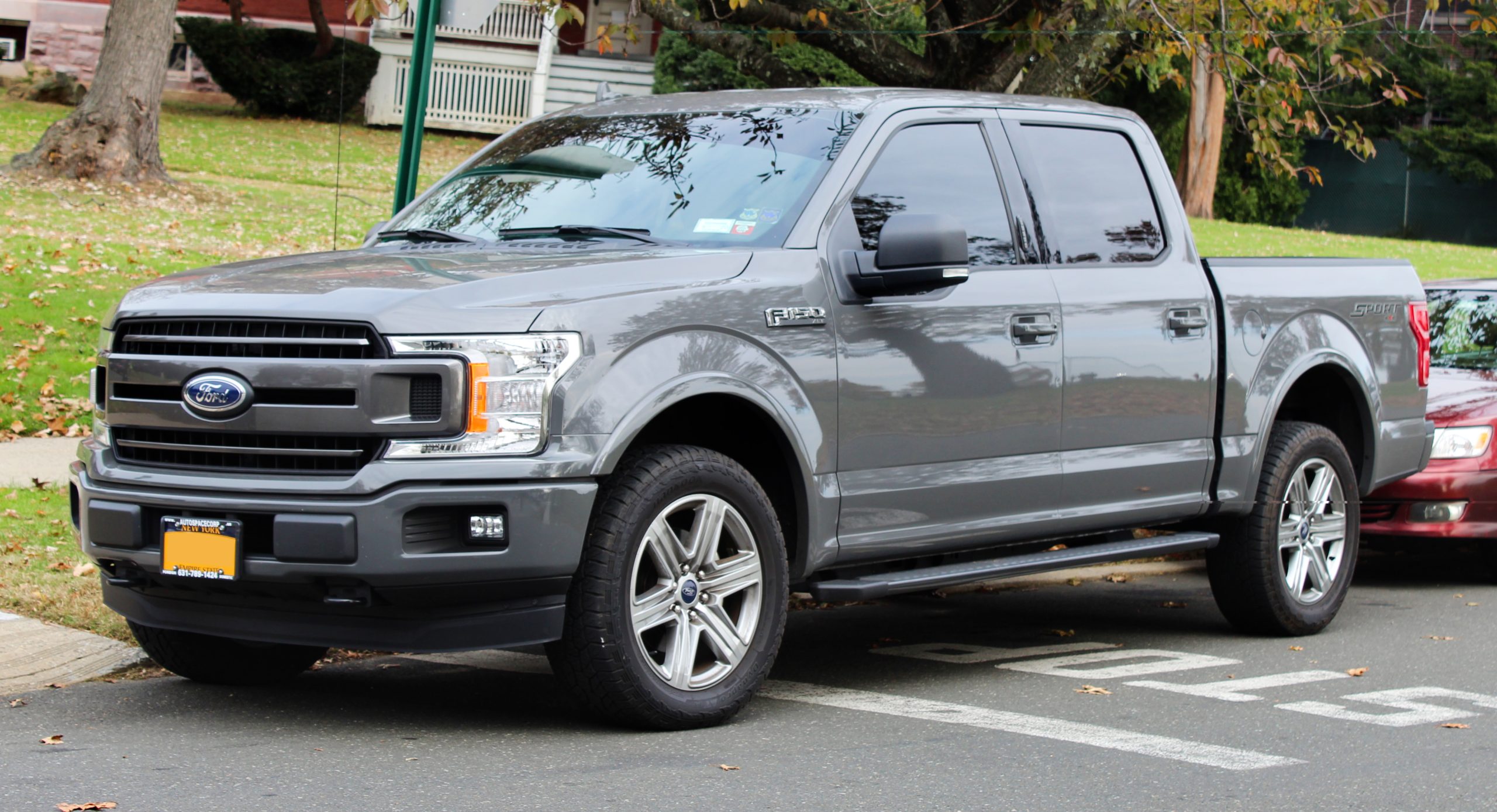Pickup trucks have long been celebrated for their ruggedness, versatility, and ability to handle a wide variety of tasks — from hauling heavy loads and towing trailers to supporting outdoor adventures and serving as mobile workstations.
Over the decades, manufacturers have continuously refined these vehicles, adding powertrain improvements, advanced safety features, and enhanced comfort and convenience.
Among the most critical but sometimes overlooked aspects of a pickup’s design is its bed accessibility. The truck bed is the heart of a pickup’s utility, and how easily drivers and passengers can access and utilize that space directly impacts the truck’s overall practicality and user experience.
Bed accessibility features refer to the various design elements and technologies that make loading, unloading, and accessing the cargo bed simpler, safer, and more efficient. These features might include integrated steps, grab handles, multifunction tailgates, power-assist mechanisms, bed lighting, and other innovations that reduce physical effort and improve ergonomics.
For many pickup owners — whether contractors hauling tools and materials, outdoor enthusiasts carrying camping or sporting gear, or everyday users transporting groceries and household items — bed accessibility can mean the difference between a frustrating chore and a smooth, convenient process.
As the pickup market has grown more competitive and diversified, manufacturers have taken different approaches to addressing bed accessibility. Full-size trucks like the Ford F-150, Ram 1500, and Chevrolet Silverado have embraced cutting-edge features such as multifunction tailgates and integrated step systems, elevating the standard for what users expect in terms of ease of use.
Meanwhile, some midsize trucks and base trims of various models remain more basic, offering few or no dedicated features to improve bed access. These disparities reflect differences in target markets, vehicle pricing, and design priorities.
In this article, we explore two contrasting categories within the pickup segment: the five pickups with the most bed-accessibility features and five pickups with virtually none. By examining what makes some trucks stand out with innovative, thoughtful designs and why others lag behind, we gain a better understanding of how bed accessibility shapes user experience.
We’ll analyze standout features like fold-out steps, multifunction tailgates, and illuminated cargo areas, as well as the practical implications for safety, convenience, and cargo management.
For buyers in the market for a pickup truck, knowing which models offer enhanced bed accessibility can be crucial. Easy access to the truck bed not only reduces the physical strain associated with loading and unloading but also minimizes safety risks such as slips, falls, and injuries — especially when working in low-light conditions or handling heavy items.
Features like integrated steps and grab handles can also extend the truck’s usability to a wider range of users, including older adults and those with limited mobility.
On the other hand, pickups with minimal or no bed-accessibility features often require additional aftermarket solutions or personal effort, which can be inconvenient and sometimes costly. For those who frequently rely on their truck beds, these missing features can impact daily productivity and overall satisfaction with the vehicle.
Whether you prioritize the latest innovations or seek to understand the baseline functionality of traditional pickups, this comprehensive overview will provide valuable insights. We’ll delve into the specific accessibility features of each highlighted truck, illustrating how design choices translate into real-world benefits or challenges.
In doing so, this article aims to inform and assist potential buyers, current owners, and enthusiasts alike in making smarter decisions and appreciating the nuances of pickup truck utility.
Also Read: 5 Sedans With Best Turning Radius And 5 With Widest
5 Pickups with the Most Bed-Accessibility Features

1. Ford F-150 (Especially the 2021 and newer models)
The Ford F-150 continues to set the gold standard in the pickup truck segment, not only for its robust performance but also for its user-centric bed-accessibility innovations. Among its many features, the integrated tailgate step is one of the most revolutionary.
This step is ingeniously concealed within the tailgate and folds down effortlessly, providing a stable platform for climbing into the bed. This design addresses one of the most common challenges pickup users face: safely and easily entering and exiting the truck bed without the need for separate ladders or assistance.
The step’s textured surface provides extra grip, significantly reducing the risk of slips, especially in wet or icy conditions. Paired with the deployable grab handle, users of varying ages and physical abilities can confidently access the bed, which is particularly useful for those who load heavy or awkward materials regularly.
Beyond the physical step, the F-150’s tailgate design is a marvel of modern engineering. Ford offers a Pro Power Onboard system integrated into the bed, allowing users to power tools, lighting, and accessories without needing an external generator or outlet.
This adds a new dimension to accessibility by making the bed a functional workspace in its own right. The tailgate itself is available in both traditional drop-down and “gate-style” side openings, allowing easier access to cargo near the cab or corners of the bed, which are typically hard to reach in conventional tailgates.
Furthermore, the F-150’s bed lighting system is another standout. Strategically placed LED lights illuminate the entire bed area, ensuring that loading and unloading can happen safely and efficiently, even in the darkest conditions. This is a crucial feature for professionals who often work late hours or in environments with poor lighting.
The inclusion of multiple tie-down hooks and adjustable cleats further improves cargo security, enabling users to tailor the load space to specific cargo sizes and shapes.
Additionally, the availability of a spray-in bed liner adds a layer of durability and protection that keeps the bed in pristine condition while preventing cargo from sliding around. All these features combined make the F-150 a leader in bed accessibility by marrying innovation with practical utility.
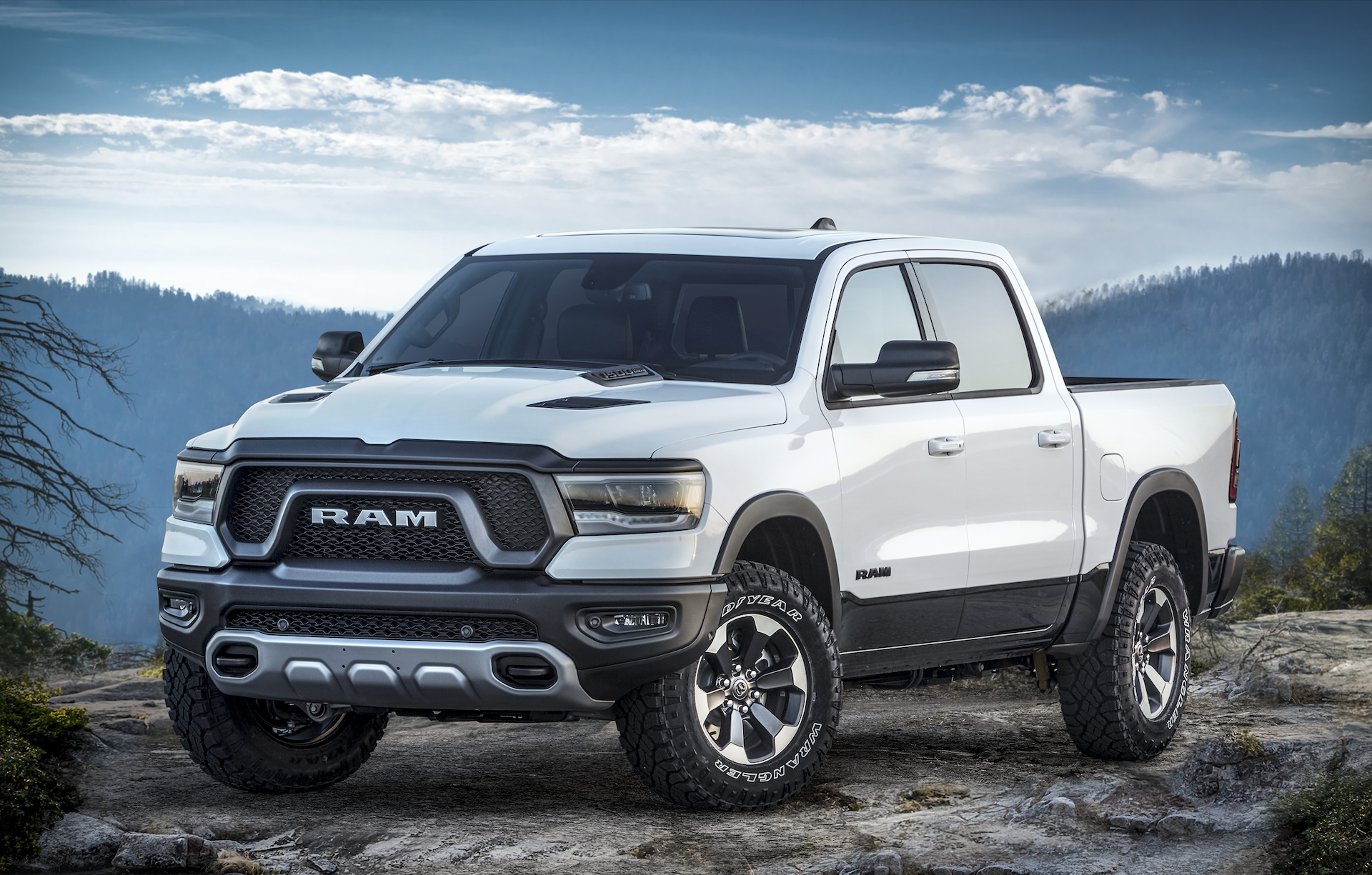
2. Ram 1500 (Especially the 2019 and newer models with the multifunction tailgate)
Ram’s 1500 took a bold step forward with its introduction of the multifunction tailgate, a feature that quickly became a benchmark for bed accessibility in pickups. This tailgate redefines how users interact with the truck bed by offering six different modes of operation, catering to a wide range of loading, unloading, and cargo management needs.
The narrow step-in mode, in particular, has been praised for its ability to fold down a built-in step paired with a sturdy grab handle, which offers an ergonomically superior way to access the bed. This system dramatically reduces the physical strain on the user, enhancing both convenience and safety, especially for frequent or heavy use.
Beyond simple entry and exit, Ram’s multifunction tailgate acts as a versatile workspace. In one mode, part of the tailgate folds down horizontally to create a stable workbench surface, allowing users to perform tasks like measuring, cutting, or assembling right at the truck bed.
This functionality makes the Ram 1500 especially popular among contractors and outdoor enthusiasts who need a mobile work area. The tailgate’s design also allows it to support heavy loads, maintaining the truck’s towing and payload capabilities while offering this enhanced versatility.
Adding to these features, Ram offers an optional Box Utility Group that transforms the bed into a more user-friendly space. This package includes LED bed lighting that brightly illuminates the entire cargo area, making night-time work safer and easier.
Power outlets within the bed provide electricity for tools, devices, or even small appliances, expanding the truck’s utility beyond traditional hauling. Ram also offers factory-installed spray-in liners and a variety of bed extenders and dividers, allowing users to customize the bed layout and protect it from damage.
These thoughtful touches underscore Ram’s commitment to blending toughness with intelligent design, making the 1500 an industry leader in bed accessibility.
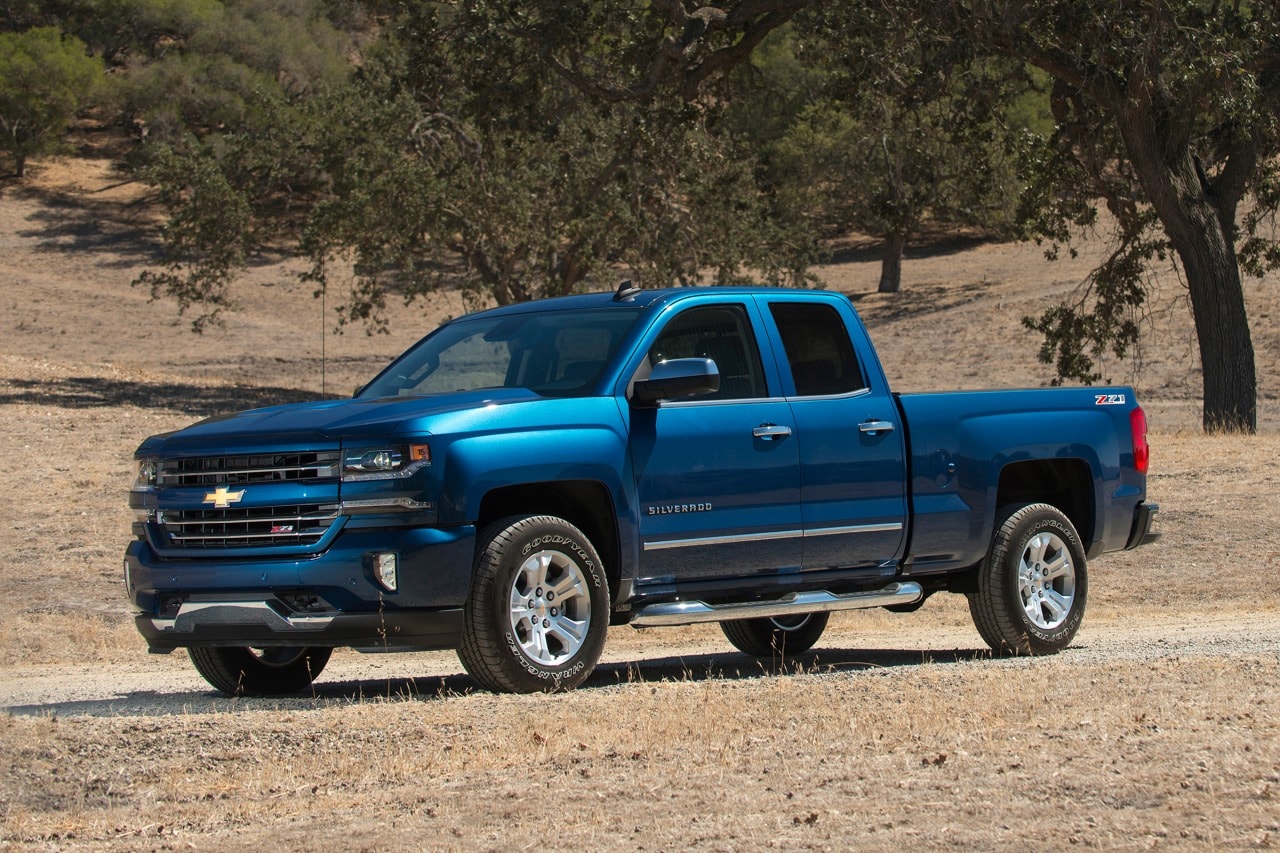
3. Chevrolet Silverado 1500 (Especially 2019 and newer models)
The Chevrolet Silverado 1500 distinguishes itself through a combination of simplicity and cutting-edge technology in its approach to bed accessibility. One of its most innovative features is the CornerStep rear bumper, which is integrated into the bed’s rear corners.
These wide, deep steps provide an always-ready platform to climb into the bed without requiring additional equipment or effort. Unlike fold-out steps that can be lost or damaged, the CornerStep is built directly into the bumper, making it durable and easy to access regardless of conditions. This design is especially helpful for those frequently handling heavy loads or bulky gear.
Complementing the CornerStep is Chevrolet’s power-release tailgate, a feature designed for ease and convenience. With a simple push of a button—either on the key fob, inside the cabin, or on the tailgate itself—the tailgate unlocks and lowers automatically.
This is invaluable for users who often have their hands full or are working in cold or wet weather conditions. On some models, Chevrolet has taken this further with a motion-activated tailgate that senses the driver’s approach and automatically unlocks and opens, making loading and unloading almost effortless.
Chevrolet has also focused on optimizing the bed itself. The Silverado offers multiple tie-down points strategically placed around the bed’s interior, allowing users to secure cargo safely in a variety of configurations.
Optional spray-in bed liners provide robust protection against scratches and dents while enhancing grip to prevent cargo from sliding. Additionally, Silverado’s available LED bed lighting offers superior illumination compared to traditional bulb systems, allowing for safer and more effective nighttime loading and unloading.
These features make the Silverado 1500 a practical and forward-thinking choice for anyone who regularly relies on their truck bed. Chevrolet’s blend of physical accessibility aids like the CornerStep and technological enhancements like the power-release tailgate illustrate a comprehensive approach to improving the truck bed experience.
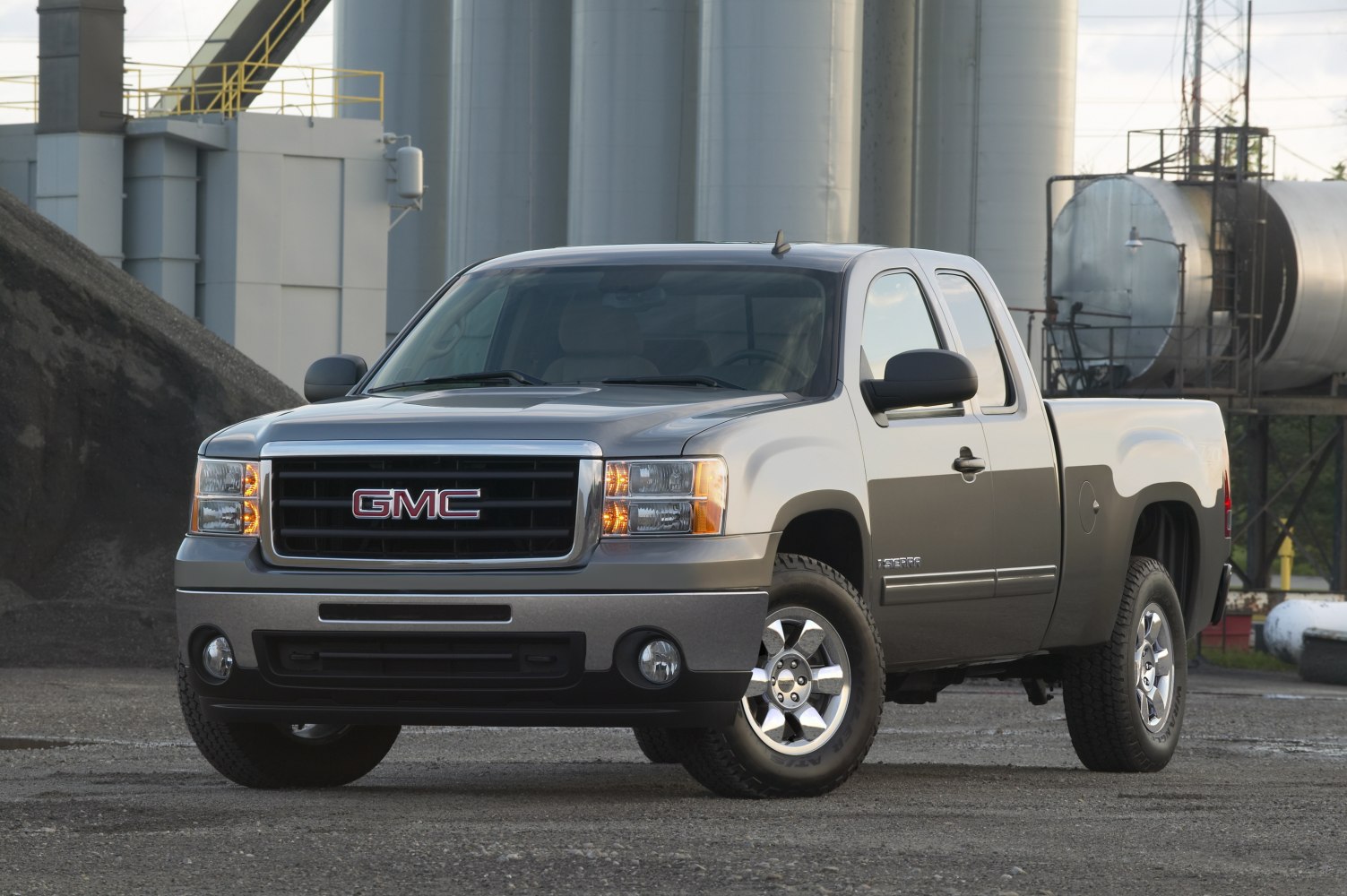
4. GMC Sierra 1500 (2019 and later, with MultiPro Tailgate)
The GMC Sierra 1500 is notable for its MultiPro tailgate, which arguably represents the pinnacle of tailgate innovation in the pickup industry.
This tailgate functions in six different ways, providing a range of options that adapt to the user’s needs. Its standout feature is the built-in step and grab handle, which together offer secure and comfortable bed access. This design allows users to climb in and out of the bed without awkward maneuvers or extra equipment, significantly enhancing safety.
In addition to the step, the MultiPro tailgate can be configured as a load stop, a work surface, or even a second-tier loading platform. This versatility is particularly useful for hauling a mix of cargo types or performing on-the-go tasks.
For example, the work surface configuration transforms the tailgate into a sturdy table that can be used for tool organization, paperwork, or even food preparation during camping trips. The load stop function prevents long items like lumber or piping from sliding out when the tailgate is partially open, adding a practical safety element.
The Sierra’s bed is further enhanced with features such as LED bed lighting, which floods the cargo area with bright, even light, making it easier to work at night.
Multiple tie-down points allow for flexible cargo securing, and spray-in bed liners protect the bed from wear and damage while improving cargo grip. Together, these features demonstrate GMC’s commitment to delivering a versatile, accessible, and highly functional truck bed experience.
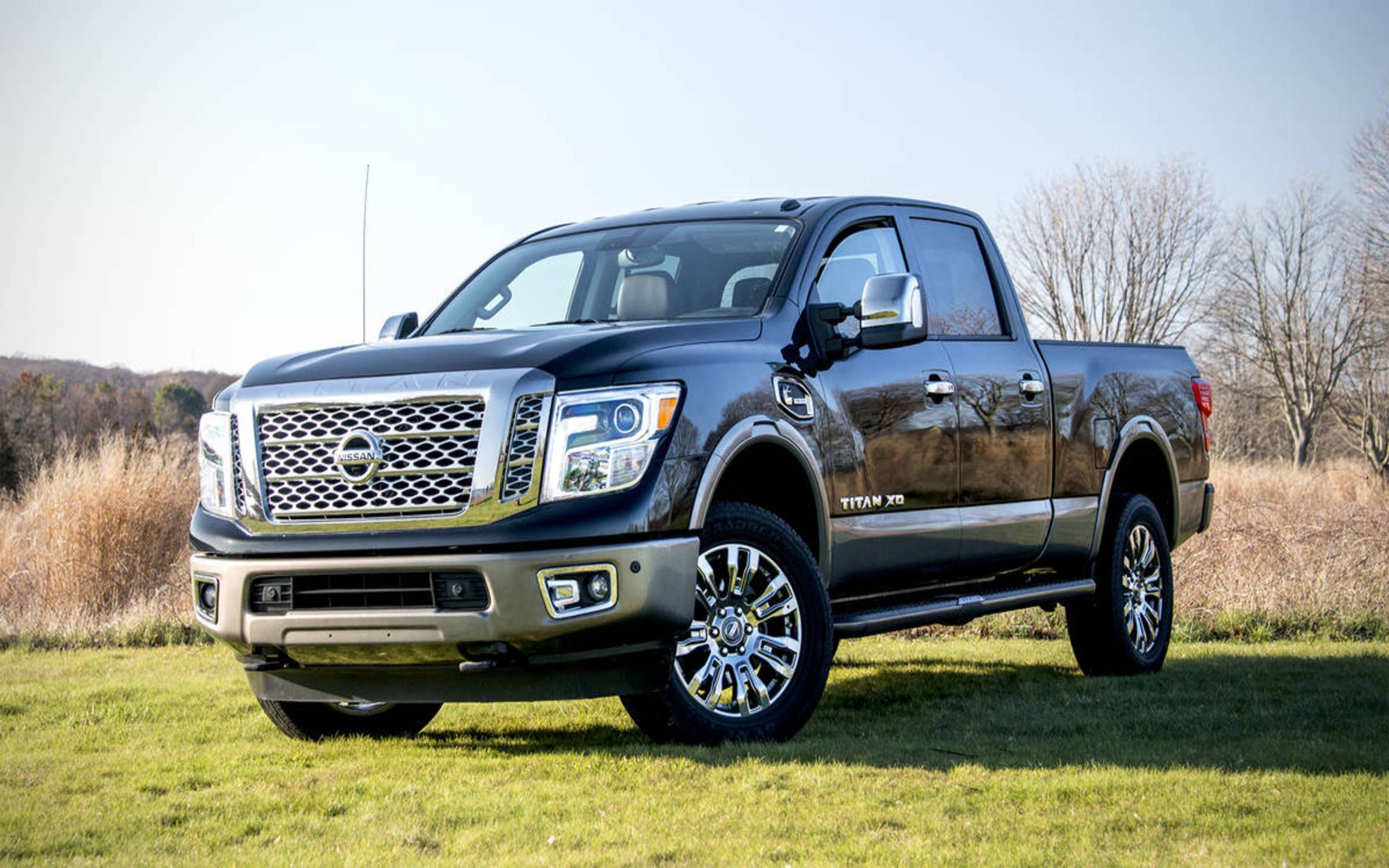
5. Nissan Titan XD
The Nissan Titan XD might not have the same market share as some American heavyweights, but it holds its own with practical bed-accessibility features designed to enhance user convenience. One of its key features is the corner step bumpers, which, like the Chevrolet Silverado’s CornerStep, provide solid, accessible platforms to climb into the bed.
These bumpers are durable and strategically placed, making them especially helpful for users who frequently access the truck bed or need to load heavy or awkward cargo. The Titan XD’s tailgate is engineered to be lightweight and easy to operate, with assist mechanisms that reduce the effort needed to open or close it.
This design consideration is important for reducing fatigue and injury risk, especially when dealing with large or heavy items. Unlike some competitors, the Titan’s tailgate does not include multifunctional modes, but its simplicity ensures reliability and ease of use.
Inside the bed, the Titan features multiple tie-down cleats and an optional spray-in bed liner, both of which help secure cargo and protect the bed’s surface. The Titan XD also offers a bed lighting system that illuminates the cargo area for nighttime usability. While not as technologically flashy as some rivals, Nissan’s approach emphasizes solid, dependable features that enhance everyday functionality.
The Titan XD appeals to those who prioritize straightforward, rugged design coupled with essential accessibility features. Its combination of corner step bumpers, assisted tailgate, and cargo management features make it a practical choice for many truck users seeking both capability and convenience.
5 Pickups with Virtually No Bed-Accessibility Features
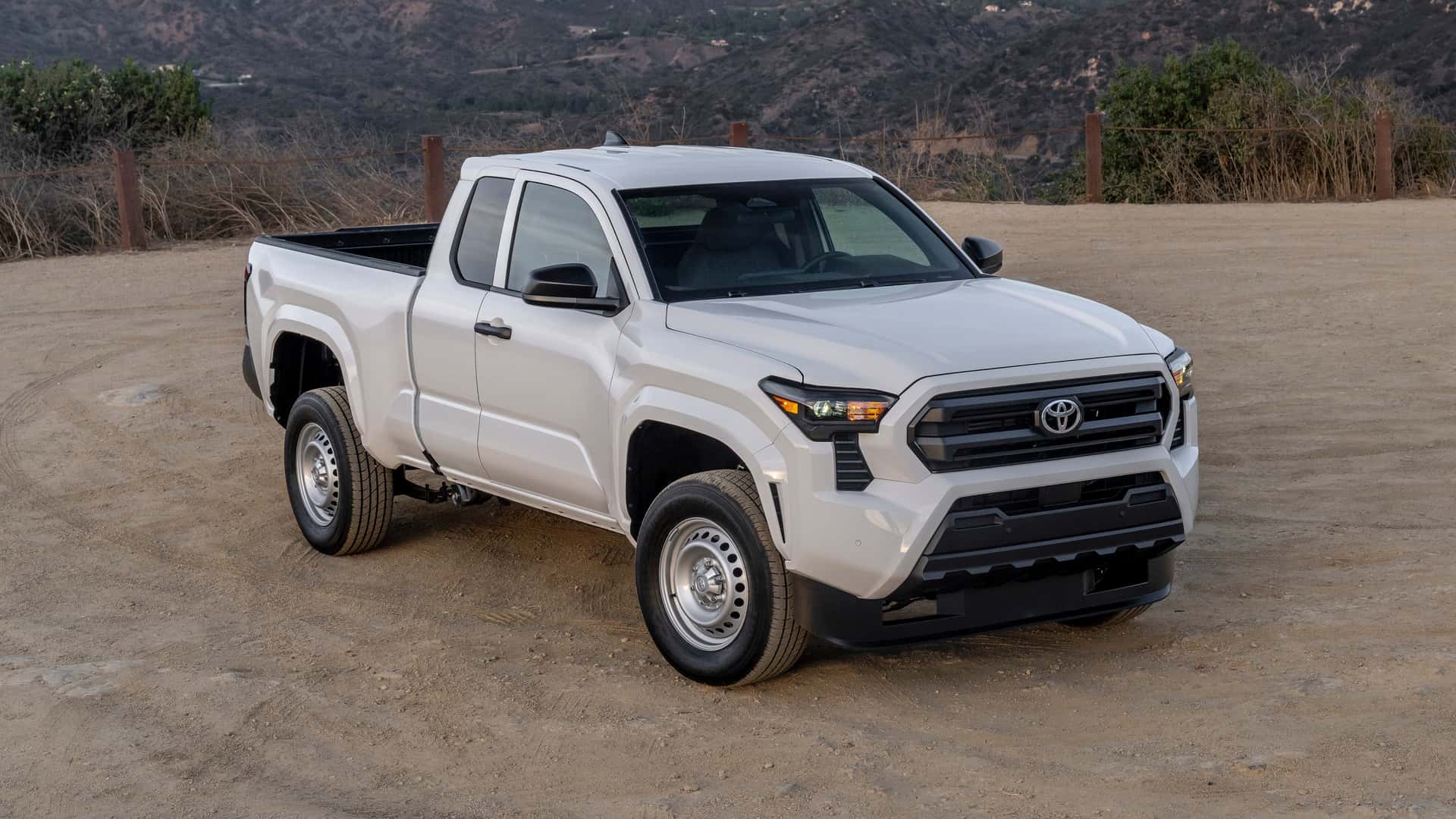
1. Toyota Tacoma (Older models and base trims)
The Toyota Tacoma is undeniably one of the most popular midsize pickups, especially among off-road enthusiasts and those seeking reliability and durability. However, when it comes to bed accessibility, especially in older models and base trims, the Tacoma often falls short.
Unlike full-size trucks that have embraced innovative tailgate steps, power-assisted tailgates, or multifunctional tailgate designs, the Tacoma sticks to a more traditional and minimalist approach. Its tailgate is a simple drop-down style, requiring users to physically lift and lower it without any mechanical aid or integrated steps to assist entry.
This lack of built-in bed accessibility can become a significant hurdle for daily users who frequently load and unload gear or tools. Climbing into the bed often requires significant effort, especially for shorter individuals or those carrying heavy cargo.
Moreover, the absence of grab handles or footholds near the tailgate forces users to rely on the tailgate’s edge, which is typically awkward and potentially unsafe, especially on uneven or slippery surfaces. While some aftermarket solutions exist, the factory setup offers very little assistance, limiting the Tacoma’s user-friendliness in this regard.
The Tacoma’s bed also often lacks well-integrated lighting solutions, which impacts visibility during nighttime loading or unloading. In many trims, bed illumination is minimal or non-existent, which can cause inconvenience or safety concerns when working in low-light conditions.
While tie-down points are present, they are basic and sometimes poorly placed, which can limit cargo security and versatility. Spray-in bed liners are commonly offered only as optional extras or aftermarket additions, reducing convenience and increasing overall costs.
Despite these limitations, the Tacoma’s reputation for toughness and off-road prowess remains intact. However, for users whose priority is frequent, easy, and safe bed access—whether for work or recreation—the Tacoma’s minimalist bed-accessibility features can be a drawback, especially compared to the more advanced options offered by full-size pickups.
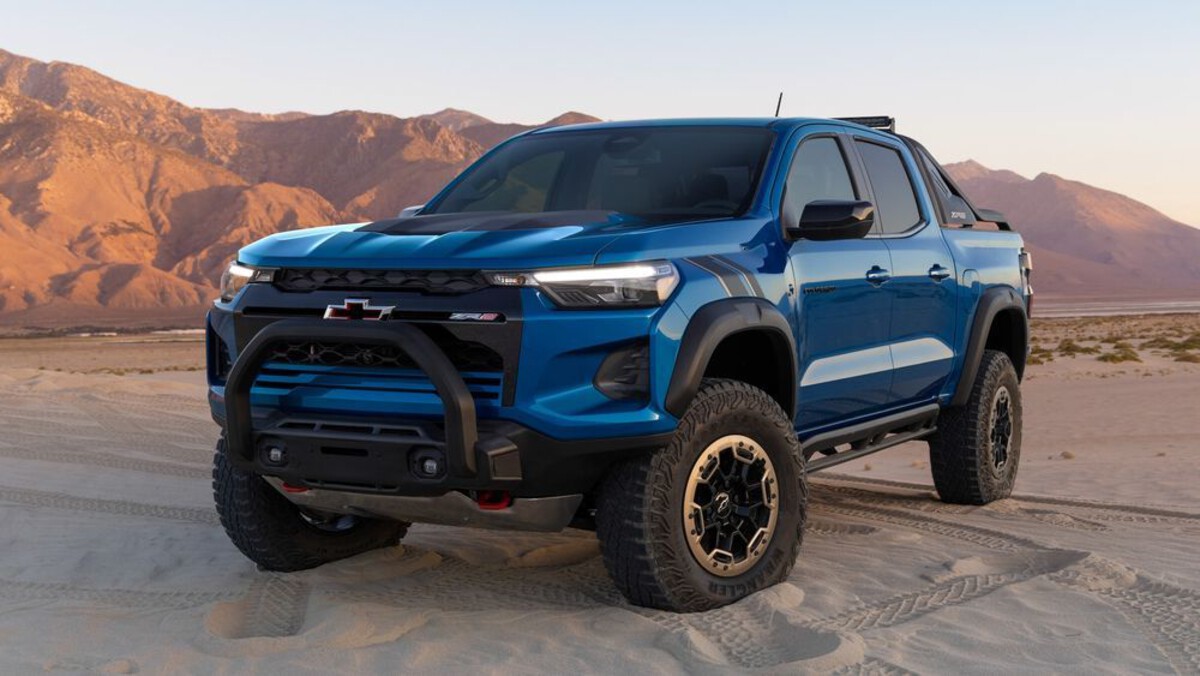
2. Chevrolet Colorado (Base trims)
The Chevrolet Colorado, a strong contender in the midsize pickup market, is praised for its balanced combination of performance, efficiency, and maneuverability. However, its base trims are notably lacking in bed-accessibility enhancements that have become common in full-size trucks.
The tailgate is a standard drop-down type, operated manually without power assist or any integrated stepping solutions. This design means users must physically manage the tailgate’s weight and maneuver around a relatively high bed wall to load or unload cargo.
Unlike the Silverado, the Colorado does not offer a built-in corner step or multifunction tailgate options, meaning ease of bed access is not prioritized. This can be a major inconvenience for workers or outdoor enthusiasts who frequently need to climb into bed. The absence of grab handles or tailgate-integrated steps forces users to find makeshift solutions or risk unsafe climbing techniques.
Bed lighting in the Colorado’s base trims is sparse or nonexistent, making night-time loading hazardous or challenging. The tie-down system is basic, often comprising a few fixed points that don’t offer much flexibility when securing different types or sizes of cargo.
Additionally, factory-installed spray-in bed liners are usually reserved for higher trim levels or require aftermarket installation, reducing protection against wear and increasing the potential for cargo damage.
While Colorado’s overall package is well-rounded for general driving and lighter-duty hauling, its limited bed-accessibility features restrict its functionality for users who demand frequent and easy cargo access. This limitation makes it less competitive in terms of convenience and ergonomics compared to both its full-size and some midsize rivals.
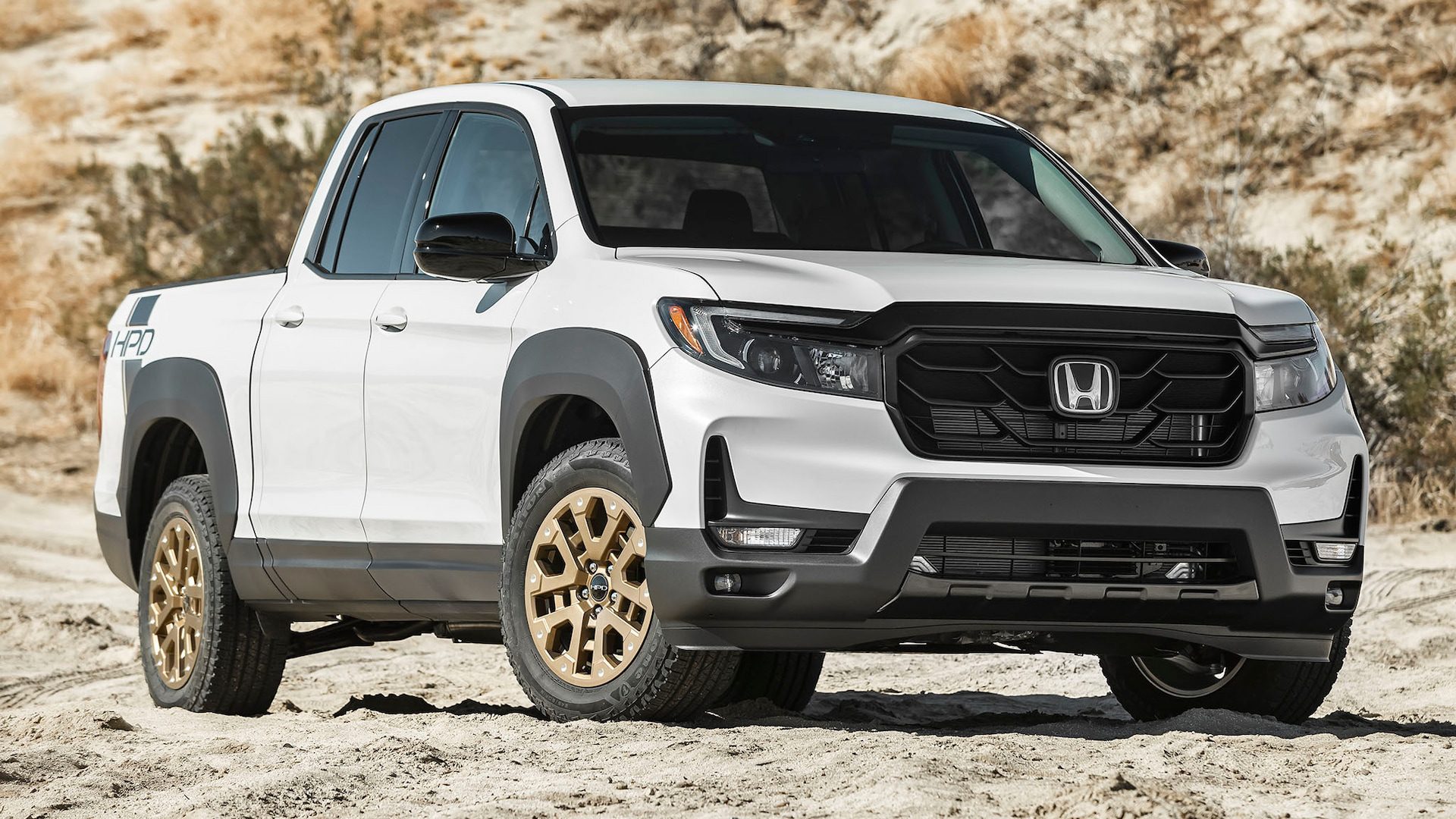
3. Honda Ridgeline (Older generations)
The Honda Ridgeline, especially in its first generation and early second-generation models, occupies a unique niche in the pickup world. Its unibody construction and car-like handling set it apart, but this design philosophy has trade-offs when it comes to traditional pickup features like bed accessibility.
The Ridgeline’s bed is functional but minimalist, lacking many of the specialized features that improve bed access and usability in more work-oriented trucks.
One notable feature of the Ridgeline is its innovative in-bed trunk—a lockable, weatherproof storage compartment beneath the bed floor—which offers secure storage for tools and gear. However, while this adds a layer of utility, it does not compensate for the overall lack of easy physical access to the bed itself.
The tailgate is a standard drop-down design, without steps, grab handles, or power assist mechanisms. This means users must exert physical effort to open and close the tailgate and climb over a relatively high bed wall to load or unload cargo.
The lack of integrated bed lighting in early models also detracts from nighttime usability, as users often have to rely on external sources for visibility.
Tie-down points are limited and not very versatile, which may frustrate users needing to secure different cargo shapes or sizes securely. Spray-in liners were not commonly factory-installed, leading many owners to invest in aftermarket solutions for bed protection.
Honda’s focus on comfort, safety, and drivability means that bed accessibility has historically been a lower priority. While the Ridgeline appeals strongly to users who want a pickup with sedan-like qualities, those needing easy, ergonomic bed access may find the truck less accommodating. This is especially true for users coming from more traditional pickups with advanced bed-accessibility features.

4. Nissan Frontier (Older models and base trims)
The Nissan Frontier, particularly in older model years and base trims, is a rugged, straightforward midsize pickup that prioritizes simplicity and reliability.
Unfortunately, this approach results in a noticeable lack of bed-accessibility features that ease the loading and unloading process. Its tailgate is a traditional drop-down design with no integrated steps, grab handles, or power assist, forcing users to rely entirely on physical strength and agility to access the bed.
This minimalist design can be especially challenging for those who frequently haul heavy or bulky items, as climbing over the bed wall without assistance is cumbersome and potentially unsafe.
The Frontier’s bed also lacks advanced lighting systems, which means low-light loading is less practical. Tie-down anchors are present but limited in number and flexibility, restricting cargo securing options.
Spray-in bed liners are often not factory-installed on lower trims, requiring aftermarket additions for proper bed protection. This further adds to the user’s cost and effort if they want to preserve the bed’s condition and improve cargo grip.
While the Frontier’s rugged construction and off-road capability remain strong selling points, the lack of bed-accessibility enhancements marks a clear contrast to newer or more premium pickups that emphasize ease of use.
For buyers prioritizing convenience and safety in bed access, the Frontier may feel outdated or less accommodating, particularly compared to competitors who offer steps, grab handles, or powered tailgates.
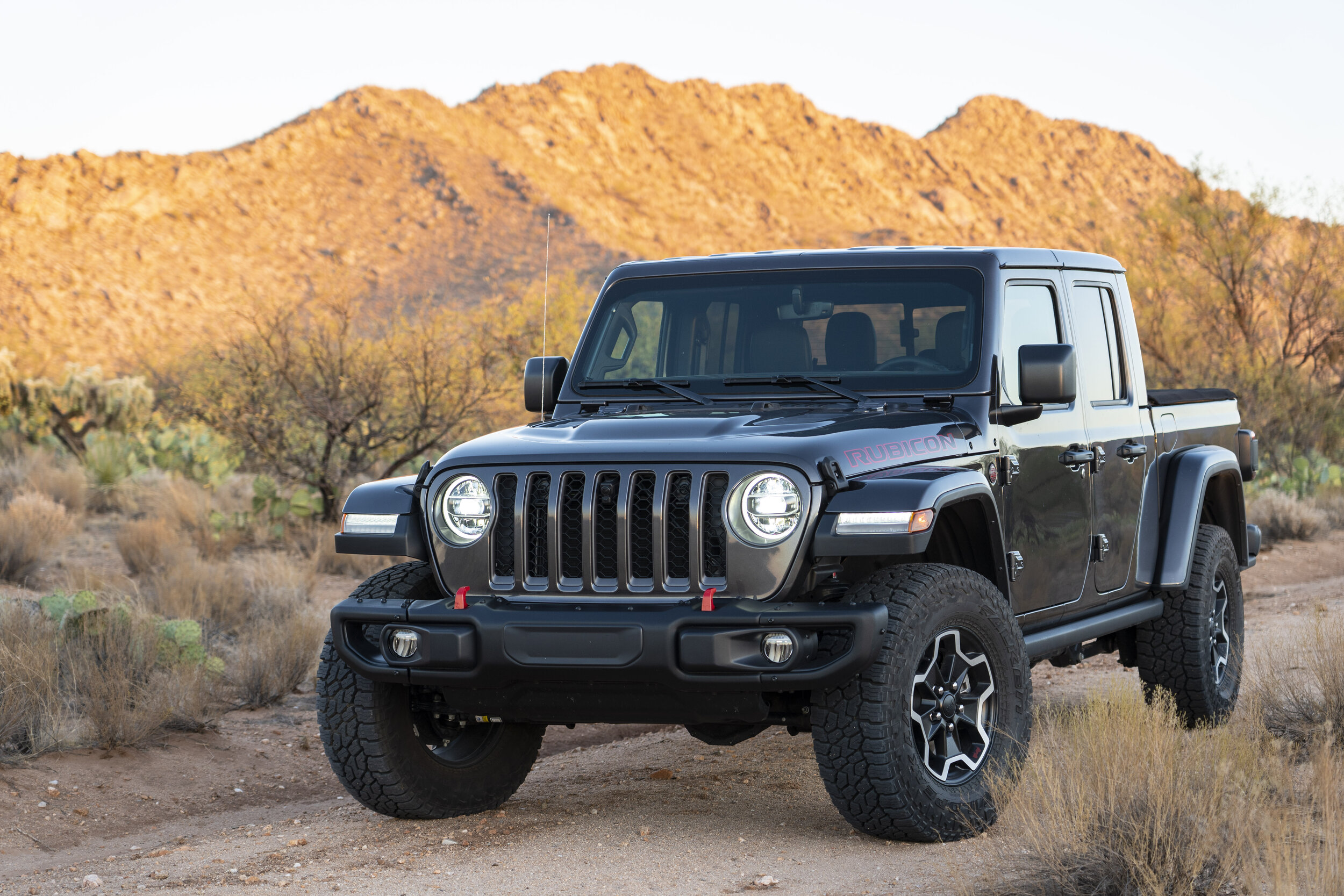
5. Jeep Gladiator (Base trims)
The Jeep Gladiator combines Jeep’s legendary off-road prowess with the utility of a pickup truck, creating a unique blend that appeals to adventure seekers.
However, in its base trims, the Gladiator offers surprisingly limited bed-accessibility features. The tailgate is a conventional drop-down type without integrated steps, grab handles, or power assistance, requiring manual operation and physical effort to open, close, and climb over.
While the Gladiator’s removable tailgate adds versatility for loading oversized cargo, it also means there is no dedicated system to aid bed access when the tailgate is in place.
This can complicate loading and unloading, especially when handling heavy or bulky items. The bed itself, although practical and durable, lacks factory-installed LED lighting or advanced tie-down systems standard in other pickups. This absence reduces safety and convenience, particularly in low-light conditions.
Spray-in bed liners and other protective features are typically offered as optional extras or aftermarket additions rather than standard equipment on base models. This places an additional burden on owners who want to upgrade their Gladiator for improved cargo protection and usability.
The Gladiator’s primary appeal lies in its off-road capabilities and Jeep heritage, but when it comes to bed accessibility and ergonomic loading features, it leaves something to be desired. For buyers who frequently use their truck bed for work or gear storage, the base Gladiator’s lack of convenience features may be a significant drawback.
Also Read: Top 10 EV Features That Come in Useful in Daily Commute
In today’s highly competitive pickup truck market, the evolution of bed-accessibility features has become a defining factor in differentiating models and enhancing the user experience.
As we have seen, pickups like the Ford F-150, Ram 1500, Chevrolet Silverado, GMC Sierra, and Nissan Titan XD exemplify how thoughtful engineering and innovative design can transform the truck bed from a simple cargo area into an accessible, multifunctional workspace.
These vehicles have raised the bar by incorporating features such as integrated tailgate steps, grab handles, multifunctional tailgates, bed lighting, and power-assist systems that collectively reduce physical strain, improve safety, and expand the truck’s versatility.
The inclusion of these features reflects a clear understanding by manufacturers of the challenges pickup owners face in real-world use.
Whether climbing into the bed to secure a heavy load, unloading cargo after dark, or needing a stable work surface on the go, these innovations address everyday problems with practical solutions. They also demonstrate how technological advancements and user-centered design can coexist with the ruggedness and durability expected of a pickup truck.
Conversely, the absence of such features in trucks like older Toyota Tacoma models, Chevrolet Colorado base trims, early Honda Ridgelines, Nissan Frontiers, and base Jeep Gladiators reveals a gap in user convenience and safety.
While these vehicles may offer reliability, solid performance, or unique styling, their minimalist approach to bed accessibility limits ease of use and can pose challenges for owners who frequently interact with the cargo bed.
For many, this translates into greater physical effort, increased risk of injury, and sometimes additional expenses for aftermarket solutions to compensate for factory omissions.
This contrast underscores an important consideration for prospective truck buyers: bed accessibility should not be overlooked when evaluating a pickup’s overall value and functionality.
The difference between a truck with thoughtfully engineered access features and one without can be profound, especially for users who rely heavily on their vehicle for work, recreation, or hauling. Beyond just raw capability, the convenience and safety offered by these accessibility features contribute significantly to owner satisfaction and long-term usability.
Furthermore, the trend toward enhanced bed accessibility highlights a broader shift in the pickup industry toward integrating technology and ergonomics into vehicles traditionally defined by brute strength and durability.
This evolution is driven by changing consumer expectations, where comfort, convenience, and safety are increasingly as important as towing capacity or horsepower. As pickups continue to evolve, we can expect to see even more creative and user-friendly bed-accessibility innovations emerge, further blending practicality with modern technology.
For those who prioritize maximum ease of bed access, investing in models that come equipped with multifunction tailgates, integrated steps, grab handles, and bed lighting will pay dividends in everyday convenience and safety. For buyers considering pickups with fewer built-in accessibility aids, it’s important to weigh the potential trade-offs and explore aftermarket solutions if needed.
In summary, bed accessibility is a key but sometimes underestimated factor that significantly influences the utility and enjoyment of a pickup truck. By choosing vehicles with advanced accessibility features, owners empower themselves with safer, easier, and more efficient cargo management, while those opting for more basic models should be aware of the challenges and plan accordingly.
As pickup trucks continue to evolve and adapt to user needs, bed accessibility will undoubtedly remain a central focus in the ongoing quest to deliver the ultimate all-purpose vehicle.

